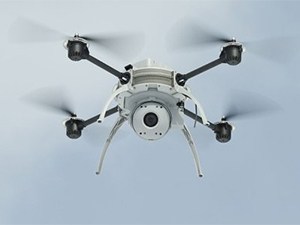
Connected devices in the home will be exposed to malware, says Trevor Coetzee, regional director for SA and Sub-Saharan Africa at Intel Security.
As the use of unmanned aerial vehicles become mainstream, so does the potential threat of drone-jackings for a variety of criminal or hacktivist purposes.
This was revealed at an Intel Security media roundtable yesterday, during a presentation of its McAfee Labs 2017 Threats Predictions Report.
The report identifies 14 threat trends to watch in 2017, reflects the opinions of 31 Intel Security thought leaders, examines current trends in cyber crime and predicts what the future may hold for organisations.
Speaking at the presentation of the report yesterday, Trevor Coetzee, regional director, SA and Sub-Saharan Africa at Intel Security, warned that an increase in drone usage will give rise to security problems.
Over the past year, the use of drones has become more popular locally and globally.
Australia Post successfully field-trialled the use of drones to deliver small packages earlier this year.
In October, Rwanda started using drones to deliver medical supplies to remote clinics. Robotics company Zipline International partnered with the Rwandan government to deliver medication and blood supplies via drones.
Meanwhile, in March, the Kruger National Park and various partners announced they would invest R16 million in drone technology to fight poaching.
However, hackers using software running on laptops threaten the potential effectiveness of drones as they will attempt drone-jackings, according to the McAfee report.
The report predicts that in 2017, drone exploit toolkits will find their way to the dark corners of the Internet. “Once these toolkits start making the rounds, it is just a matter of time before we see stories of hijacked drones showing up in the evening news. Even without a drone-jacking toolkit in hand, we will begin to see an increase in drone-related incidents.
“In 2017, we will see a local news report about a person getting fed up with one of the neighbourhood kids flying a drone over his back yard. But instead of using a shotgun loaded with birdshot, the drone will be taken out of the sky by software running on a laptop with a directional antenna.”
The Internet of things (IOT) is no longer just a buzzword, as more enterprises plan significant investments in IOT and as more households become smart homes or connected homes.
According to International Data Corporation predictions, the global total market for IOT will reach $1.7 trillion by 2020.

In 2017, drones will be taken out of the sky by software running on a laptop.
The Intel Security report predicts IOT malware will open backdoors into the connected home that could go undetected for years.
“Within the next 12 to 18 months, we will see malicious code hiding in widely used libraries or directly embedded in devices used in the consumer IOT space. We might also see some form of app collusion between consumer IOT devices and smartphone apps.
“We predict that some home IOT devices shipped in 2017 will have backdoors installed. Due to the nature of these devices, spying and personal information theft may go unnoticed for years.”
Coetzee explained that security agents want to provide safety, but because user experience requires instant gratification, security of the home IOT market can be left compromised.
He added that in terms of regulation, it becomes difficult to police these security threats. “Laws will not be able to keep up with technology advancement. Ambiguous regulation will leave cloud providers and their customers exposed to litigation.”
Click here to read Intel Security’s complete threat predictions list for 2017.
Our comments policy does not allow anonymous postings. Read the policy here
